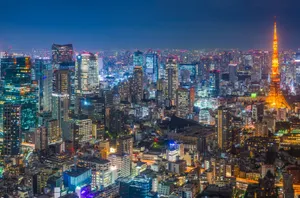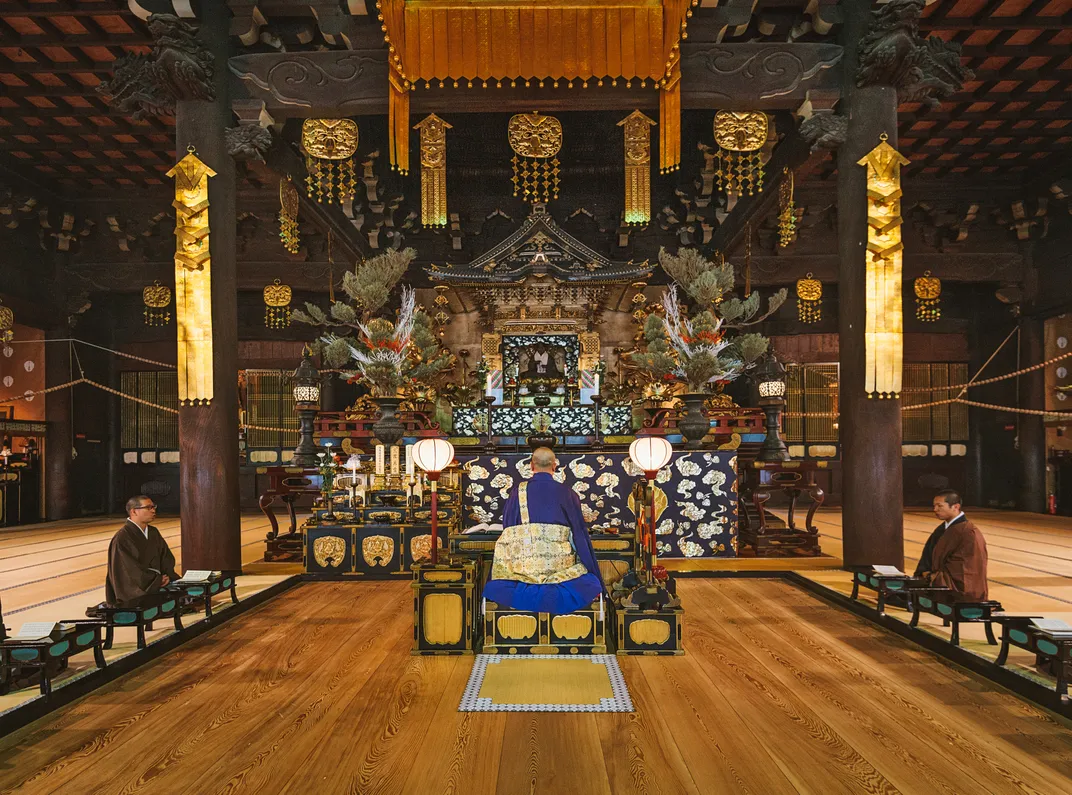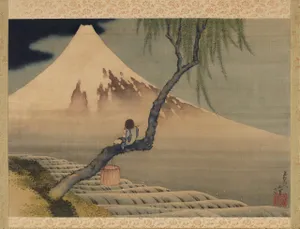Virtual Journey: Eternal Japan

From Tokyo to Mt. Fuji, Kanazawa, and Kyoto—explore a land of sublime art, unsurpassed natural beauty, and fascinating traditions, plus bustling commerce and modernity on this virtual journey of Japan!
Iconic Cities and Sites

Kyoto
Read about the experiences of travel writer Pico Iyer in Kyoto in Smithsonian Magazine. Then discover Nijo Castle, a World Heritage site and one of Japan's national treasures located in Kyoto.

Tokyo and Mt. Fuji
Tokyo, and much of Japan, is greatly influenced by its volcanic geological features. Learn about the rebuilding of Tokyo after the Great Kanto Earthquake in this video from Smithsonian Channel. Take a look into the science of its earthquakes at the Smithsonian’s Global Volcanism Program. Then read about the cultural power that Mt. Fuji takes on for the Japanese people, philosophers, and artists in an article in Smithsonian Magazine.

Nara: The Sacred Sites of Japan
Nara was the country’s capital from 710–784 and the cradle of traditional Japanese culture. Learn about this region in a video by the British Museum, then read about its importance on the Ancient Silk Road in a post from the Smithsonian's Folklife Festival.
The Temples

Buddhism was introduced to Japan in the 6th century and remains the spiritual soul of the country. Explore some of the country's more important temples during this virtual journey.

Kinkaku-ji Temple
Kinkaku-ji is a Zen Buddhist temple and is one of the most visited destinations in Japan. Its name is derived from the fact that the upper two levels are covered in gold leaf. Learn about this site and take a brief walking tour courtesy of Ancient History Encyclopedia.

Kofuku-ji Temple
Learn about Kofuku-ji temple, once one of the Seven Great Temples in Nara and now a World Heritage site, and the hollow dry lacquer sculptures in San Francisco's Asian Art Museum's collection that were found at the temple.

Todai-ji Temple
When completed in the 740s, Todai-ji (or “Great Eastern Temple”) was the largest building project ever erected on Japanese soil. Its creation reflects the complex intermingling of Buddhism and politics in early Japan. Learn more about this temple from an essay by a professor from Khan Academy.
Discover Japan's Rich Culture

The Smithsonian's National Museums of Asian Art
The Freer Gallery of Art and Arthur M. Sackler Gallery are home to an immense collection of Asian fine arts and the largest Asian art research library in the U.S. Read about the impressive Japanese collections at these adjoining museums on the nation’s Mall.

How Japan's Washi Paper Helps Smithsonian Conservators
Much of modern paper conservation practice derives directly from traditional Japanese mounting techniques for their art forms on paper. Read about the experience of one of our conservators when he attended a course in Japan to learn traditional Japanese conservation techniques, which then helped to inform modern approaches to paper conservation. Plus, see firsthand how Washi paper is created and used in this UNESCO video.

Art and Literature of the Edo Period
Discover Japan's Edo period at the Smithsonian! The Freer and Sackler Museum collections feature more than 5,000 objects related to the Edo period and hundreds of prints by the Edo masters Hokusai and Hiroshige. Take a quick tour of 20 prints from Hiroshige’s One Hundred Famous Views of Edo from the museum collections. Then read this Smithsonian Magazine article to discover a few of the key influences of the Edo period, as illustrated by two past exhibitions at the Freer Gallery.

Gold Leaf Technology
Learn about the arts that feature gold leaf and the painstaking process of creating it in these two brief videos based on Kanazawa, home to most gold leaf production in Japan.

The Geisha
Discover the history and debunk the myths of the geisha in this Getty Images documentary.

Traditional Calligraphy and Contemporary Art
Calligrapher and renowned Japanese artist Koshun Masunaga created her own artistic language inspired from brush calligraphy and the world of sports. Here we can see a behind-the-scenes look into her process.
Meet a Smithsonian Journeys Expert

Jonathan Hall
Jonathan M. Hall is Visiting Assistant Professor in Japanese Studies at the University of California Riverside where he teaches courses in Japanese literature, history, film and aesthetics. His broad range of courses includes Classical Japanese Literature, Cultures of the Floating World, Japanese film history, and modern Japanese women’s literature. His published articles and book manuscript include writing on kabuki dance, Japanese postwar photography and performance, and twentieth-century Japanese film. Jonathan is also active as a film subtitler and occasional dramaturge for contemporary performance.
Reading List
Learn more about Japan with these reading selections. See the full reading list here.





